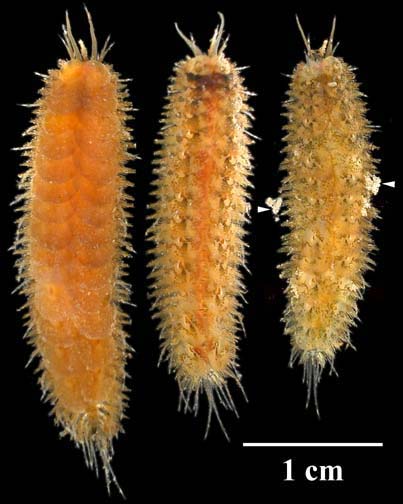California Academy of Sciences
Home What is a Settling Plate? Settling Plate Organisms Participating Schools Get Involved!
Harmothoe "imbricata" (Linnaeus, 1767) - Non Native
Harmothoe "imbricata" are relatively small, delicate scaleworms (although they may reach lengths of 65mm) with a varied color pattern on their dorsal elytra (scales). The fifteen elliptical pairs of elytra that cover the dorsum may be easily lost if the worms are handled.
H. "imbricata" is an extremely common scaleworm found in a wide range of habitats throughout the Northern Hemisphere. This species is cryptogenic (of uncertain origin), but appears to have been introduced to the San Francisco Bay area. H. "imbricata" is very common in local dock fouling communities, as well as in subtidal habitats, and often lives commensally in the tubes of terebellid polychaete worms. It thrives in both brackish and marine conditions, a tolerance that allows it to colonize a diversity of microhabitats throughout the Bay.
The quotation marks around the species name are used to signify that this species is in need of more research to determine if there are other species taxonomically "lumped in" with Harmothoe "imbricata", due to a poor original description of the species (L. Harris, pers. comm.).
Studies have
shown that female H. "imbricata" may either brood their
eggs underneath their elytra or spawn them freely. The animal on the right
side of the photo below shows eggs held under the elytra (see white darts).
Male and female worms of this species form pairs during the breeding season,
and fertilization occurs underneath the female's scales or in seawater at
the time of spawning.


